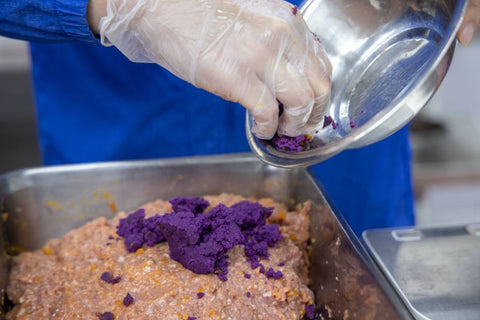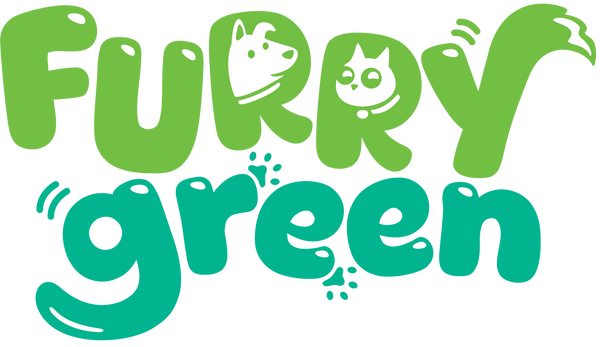
From 'Ugly Food' to Healthy Feasts: The Furry Green Mission「Ugly Food」
Share
From 'Ugly Food' to Healthy Feasts: The Furry Green Mission
According to statistics from the Hong Kong Environment Bureau in 2011, 3,600 tonnes of leftover food and kitchen waste are discarded daily in Hong Kong. To reduce waste, some charitable organizations collect unsold vegetables from wet markets and donate them to grassroots citizens. However, some "Ugly Food" is rejected due to its appearance and ultimately ends up rotting in landfills. In light of this, three environmental entrepreneurs decided to "rescue" these unattractive ingredients, upcycling them into nutritious food and giving them a "second life."
Letting Pets Educate Their Owners
The reborn "Ugly Food" is transformed into nutritious, fresh pet food. But why pet food instead of other food products? The founder says, "Hong Kong lacks education on food recycling. If we made human food, the public might not accept it, so we started with pet food, which is more readily accepted." He explains that the public often-misunderstands "Ugly Food" as kitchen waste. However, food becomes kitchen waste only after being processed in the kitchen and discarded, whereas "Ugly Food" refers to unsold produce in wet markets. Therefore, they hope to use the image of pets enjoying the food to educate owners that leftover vegetables, after trimming damaged parts and thorough cleaning, are still delicious and edible, achieving the goal of "food cherishing."

Nutrient-Rich Fresh Food Pouches
They collaborate with the Vegetable Marketing Organization and some food recovery organizations to collect leftover vegetables from wet markets. Then, they process the ingredients and produce fresh food pouches at their own facility. The ingredients and portions of the eco-friendly pet food pouches are recommended by professional nutritionists. Each flavor combines one main vegetable with one main meat, ensuring a balanced diet. The pouches come in various flavors. Besides the common chicken, there are also hypoallergenic duck and fish recipes, suitable for dogs with sensitive stomachs. The pouches have a shelf life of 3 to 4 months. Before serving, simply thaw them in hot water for 8 to 10 minutes. The portion size depends on the dog's size and calorie intake. The three founders also welcome owners to customize meal plans for dogs with specific needs, catering to different breeds and health conditions.

The combination of fish and pumpkin is not only rich in protein but also high in fiber.
Although they currently only offer dog food pouches, they are developing cat food pouches. However, because cats are more "picky," it is still in the research phase.
Bringing Warmth to Stray Animals
Besides recycling leftover vegetables, the three founders also collaborate with charities that rescue stray animals, providing them with fresh food pouches. Pirry describes it as: "These charities rescue stray dogs, we rescue food, and then we use the rescued food to rescue stray dogs." TH adds, "Seeing them eat with such joy gives us encouragement and motivation to develop more new products." However, the three feel that Hong Kong's education on waste reduction and recycling is very behind, lacking knowledge on how to properly utilize waste materials. For example, they once held a workshop where owners could make food to share with their dogs. The ingredients were similar to those in the food pouches, demonstrating that with a slight change in mindset, leftover food can become a shared delicacy for humans and pets. Cleveland concludes, "Waste reduction involves many aspects. Upcycling leftover vegetables into fresh food pouches is just one part, but the ultimate goal of all efforts is to reduce waste." Waste reduction is a long journey, but if everyone takes small steps, we can reach the destination together.
The Slow-Cooked Production Process
The founder of Furry Green states that slow cooking can lower the cooking temperature, thus preserving the nutrients in the food. In addition, the slow-cooking method requires vacuum sealing. After cooking, the food pouches can be directly frozen at -18 degrees Celsius, ensuring food safety and extending shelf life. The food safety standards of the pouches are based on the advice of a food safety professor, reaching "human-grade" levels.

1. After washing, the ingredients are cut into small pieces.

2. Then, they are lightly blended in a food processor, and all ingredients are mixed thoroughly.

3. The mixed ingredients are divided into small pouches and then vacuum-sealed.

4. Finally, they are slow-cooked at 80 degrees Celsius to preserve nutrients and ensure safety.
Frequently Asked Questions
What exactly is 'ugly food' and is it safe for my pet?
'Ugly food' refers to fresh produce that is rejected by markets due to its imperfect appearance, such as size, shape, or minor blemishes. It is not rotten or spoiled. Furry Green rescues this unsold produce, carefully trims any damaged parts, cleans it thoroughly, and upcycles it into nutritious pet food. It is perfectly safe and retains its nutritional value, helping to reduce food waste while feeding pets well.
What are the different food grade levels for fresh pet food?
Most fresh pet food pouches are marketed as "human-grade," meaning their ingredients and cooking methods meet human food standards and are safe for human consumption. However, "pet-grade" fresh pet food does not necessarily mean its ingredients have safety issues. According to the Association of American Feed Control Officials (AAFCO) guidelines, "pet-grade" fresh food may contain animal by-products like organs and fats, but it will never contain inedible ingredients like poultry feathers. Pet owners can rest assured that it's safe for their furry friends.
Is fresh pet food a better choice than dry kibble?
Besides ingredient quality and portion size, pet owners should also consider their pets' calorie and nutrient intake. Generally, the calorie content of fresh pet food is lower than that of dry food. One gram of fresh food contains about 1.2 to 4.7 calories, while one gram of dry food contains about 3.2 to 4.5 calories. Therefore, adjust the feeding portion according to the pet's daily calorie needs to avoid overfeeding or nutrient deficiency. Additionally, each pet's digestive system has different adaptability. When switching to a new food, gradually mix it with the old food to allow the pet to adjust. Do not rush the process. After switching, continue to monitor the pet's condition, and if any abnormalities occur, seek veterinary assistance immediately.
